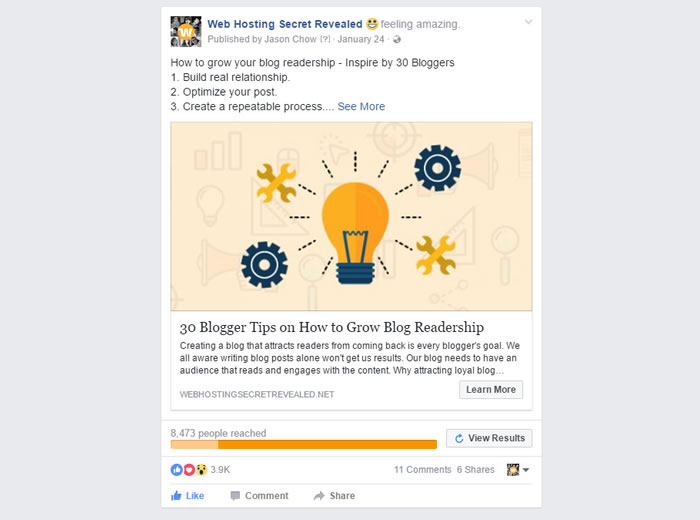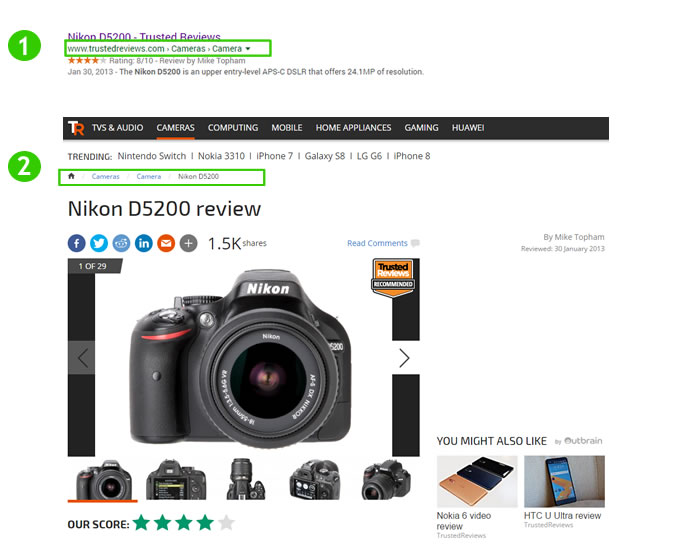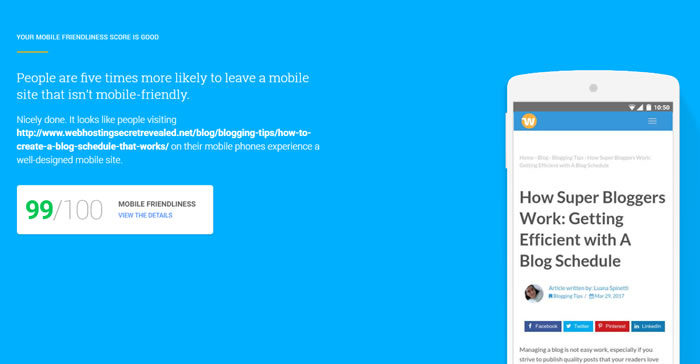ProBlogger: On-page SEO Tips: Three Things You Can Do Right Now | |
| On-page SEO Tips: Three Things You Can Do Right Now Posted: 25 Apr 2017 07:00 AM PDT Here's something you should have known by now – There are a number of aspects of a given web page that influence search engine rankings. And by optimizing these aspects (namely, on-page SEO), you will get higher rankings on search engines. Some of these factors which comprise on-page optimization include:
These are considered the fundamental factors of on-page SEO optimization, but they are by no means the only things you can do to improve your website’s rankings with search engines. In this post, I will talk about three on-page optimizations, proven by case studies and SEO experiments, which will create an immediate impact on how well your site gets ranked on search engines – in particularly, Google. 1. Better click-through-rate, better search rankingsSEO is never a pure-science subject in my opinion. However, it has been possible to guesstimate what Google wants, by considering patents it has submitted in recent years, and by experimenting with various factors for their effect on rankings. One of the known on-page factors, proven by Rand Fishkin's study, is your page click-through-rate on Google search results (I call it Search CTR). Search CTR is a percentage that identifies how often people view your page on search engine, and then actually click on it to see more. According to Rand's experiment, when Google sees that the CTR for a given page is higher than normal, it assigns it a higher ranking. From this, it stands to reason that one great way to boost your site rankings would be to improve your CTR on the search results page. Some ways you can go about that include the following approaches: Optimize your page title for more clicksThere are some very specific things you can do to optimize your title, for example, including the current month or year in your title.  4 out of 5 top search results for "Best Laptop Brands" contain the year in the page title You can also experiment with Google Adwords or Facebook Advertising to see which version of your title works best and appeals most to your target audience. For instance, titles using the phrase "step-by-step" or "how-to" usually have greater appeal than the mere mention of how to do something in my experience.  One of our top performers this year. This Facebook post (both paid and organic) got 6x better engagement rate compare to our average. Shorter, more concise titles also lead to better CTR and higher rankings, according to a study conducted by Etsy, and those which performed the best were titles that included only the target search keyword phrase. Include schema markup on your siteSchema markup gives meaning to your data. It helps search engines to understand your data better and display your data differently on their search results. Hence, more users' attention and (hopefully) clicks. Put ‘breadcrumbs’ in your blogBreadcrumbs help users navigate back to the main topic, and to locate themselves in whatever blog they’re reading, and have been explicitly stressed by Google as important to the overall user experience.  Example of Google showing a site's breadcrumb navigation in its search result. 2. Broken links and 404-errorsBroken links and 404 errors signal Google two things –
In result, Google assumes your website is simply not being maintained to a high standard, and users would be better served by another site which has high quality content. In an actual case history of a site clean-up published in Blizzard Press, a comprehensive site improvement was undertaken. The clean-up initiative repaired more than 1,000 broken images, setup more than 100 301-redirects, corrected dozens of broken internal links, and tracked more than 280 keyword phrases for effectiveness. As a result of the corrections made, the client’s website climbed more than 1,700 places in the search rankings.  On average, each of the 286 keyword phrases being tracked advanced six full places. Not only was this an astonishing climb for the website, but it all happened within the space of one week! This should serve as proof positive that timely correction of navigation issues can have an immediate and profound effect on the ranking of your website. Taking Actions404 errors and broken links are easily fixed, so such problems should be avoided. In the case of a wrong URL, simply correct the address. If the target page no longer exists, a 301-redirect can be used to point to a page with similar content. To determine whether or not your site has such errors embedded in its pages, a site-crawling tool such as Screaming Frog SEO Spider or SEM Rush can be used. 3. Get mobile-optimizedIn April of 2015, Google rolled out an update which boosted the rankings of mobile-friendly websites. This gave preference to sites having high-quality content for mobile devices, without the need to zoom, scroll, or otherwise re-position their screens for readability. This was of course in deference to the fact that the usage of mobile devices and smartphones were being used so much for web browsing. Within 18 months, Google was prepared to roll out another update, this one making their primary indexing and evaluation centered on the mobile website’s characteristics rather than the desktop version of the same website. While not ignoring the desktop website, focus was then centered squarely on the kind of user experience provided to owners of mobile devices instead. It is not at all surprising therefore, that a number of case studies have confirmed the fact that optimized mobile site presentation now has a direct correlation to being ranked higher in search engine results. When my site's (WHSR) new mobile-friendly site design went live on December last year, search traffic surged for more than 20% (in particular, our host review index page – which took us more than three weeks to create such a big mobile-friendly table).
Google Mobile-Friendly Update Study #1One study conducted by Stone Temple was particularly telling, because it captured rankings information for thousands of websites before and after Google’s update. As might be expected, 46% of sites considered non-mobile friendly slipped down in the rankings, and more than 30% of those which were considered mobile-friendly rose in the rankings. The rise for mobile-friendly sites would have been much more dramatic, except for the fact that many of the sites tracked were already ranked #1 in their specific area of interest. Google Mobile-Friendly Update Study #2In a second case study involving retail company Offspring, a major re-design of their website was undertaken to provide users with a responsive website. Previously the company had no mobile-friendly presentation, and it had become painfully obvious that Offspring was missing out on a huge sector of the consuming public. After wading through all the expected trials and tribulations of such a massive project, the results were even more impressive than company officials had hoped for. Within three months of the new mobile-friendly site launch, first-page visibility had increased almost 78%. In addition, the Google site usability score jumped from 60 to 100, the company had a 103% increase in mobile revenue, and there was a 15% increase in their mobile conversion rate. Take ActionsIt’s no exaggeration to say that getting mobile-optimized is not really an option anymore, it’s a requirement. If your site isn’t optimized for mobile traffic, you’re missing out on the largest segment of Internet traffic. To find out just how mobile-friendly your website is, use this handy tool: https://testmysite.thinkwithgoogle.com/.  Sample of Google Mobile Friendly Test. All you have to do is plug in your site URL, and Google will evaluate everything about your site. Then you’ll be provided with a percentage figure on its mobile friendliness, its mobile speed, and its desktop speed. You will also have the option to request a free report which details how those figures were arrived at, and some recommendations on what you can do to improve your scores. The post On-page SEO Tips: Three Things You Can Do Right Now appeared first on ProBlogger. |
| You are subscribed to email updates from ProBlogger. To stop receiving these emails, you may unsubscribe now. | Email delivery powered by Google |
| Google Inc., 1600 Amphitheatre Parkway, Mountain View, CA 94043, United States | |

0 comments:
Post a Comment